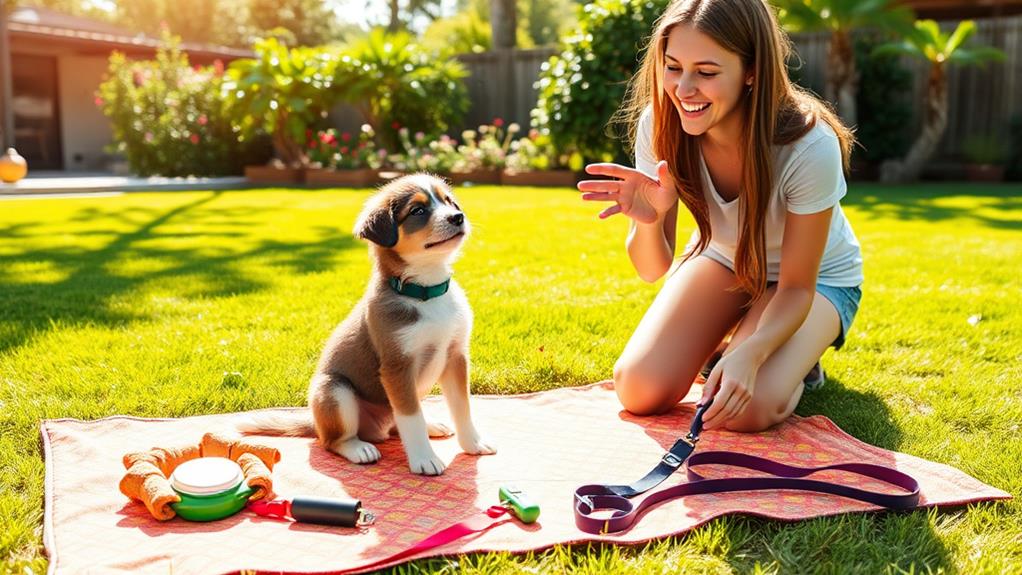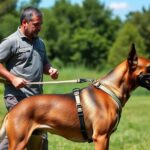To train your puppy into a well-behaved dog, start with basic commands like sit, stay, and come. Use positive reinforcement with treats and praise to encourage good behavior. Keep training sessions short and consistent, practicing daily for 5-10 minutes. Socialize your puppy with different people and pets to build confidence. Crate training helps with housebreaking, so introduce it gradually as a safe space. Remember to handle any biting with redirection and patience. Regular exercise and playtime are essential too. Keep these tips in mind, and you'll find more strategies to enhance your puppy training journey.
Start With Basic Commands
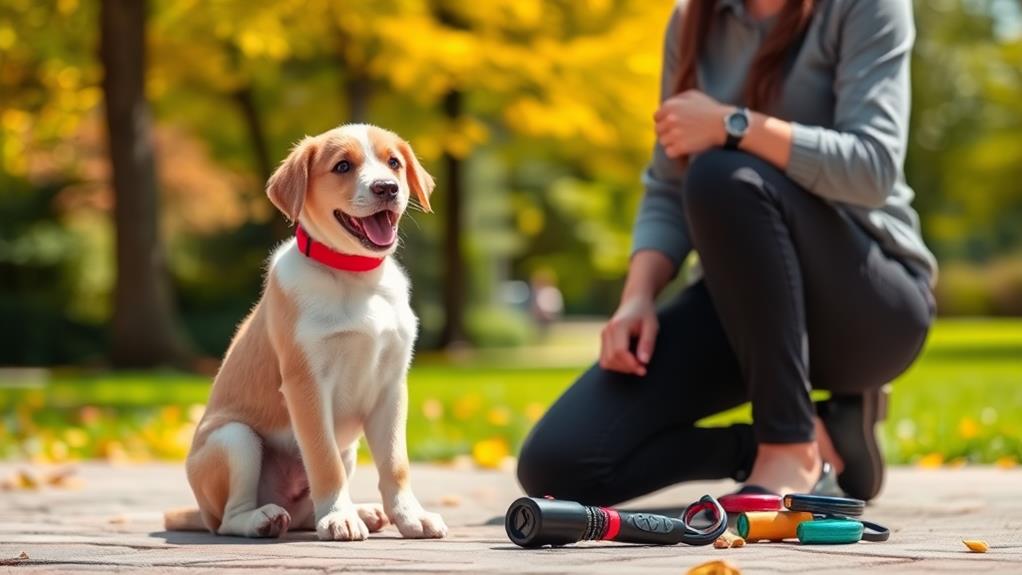
When you first bring your puppy home, it's vital to start with basic commands. Teaching these commands early establishes a foundation for good behavior and strengthens your bond. Begin with simple commands like "sit," "stay," and "come." These are indispensable for your puppy's safety and help you communicate effectively.
Use positive reinforcement to encourage learning. Reward your puppy with treats, praise, or playtime right after they successfully perform a command. This builds a positive association and motivates them to repeat the behavior. Keep training sessions short, around five to ten minutes, to maintain your puppy's attention and enthusiasm.
Be patient and consistent in your approach. Puppies may not grasp commands immediately, but with persistence, they'll catch on. Avoid using harsh corrections; instead, focus on redirecting unwanted behavior positively. If your puppy seems confused, simplify your commands or practice in a quieter environment.
Lastly, practice these commands regularly in different settings. This helps your puppy generalize their understanding and respond well in various situations. Starting with basic commands is the first step in raising a well-behaved dog, ensuring a happy, harmonious home for both of you.
Consistent Training Schedule
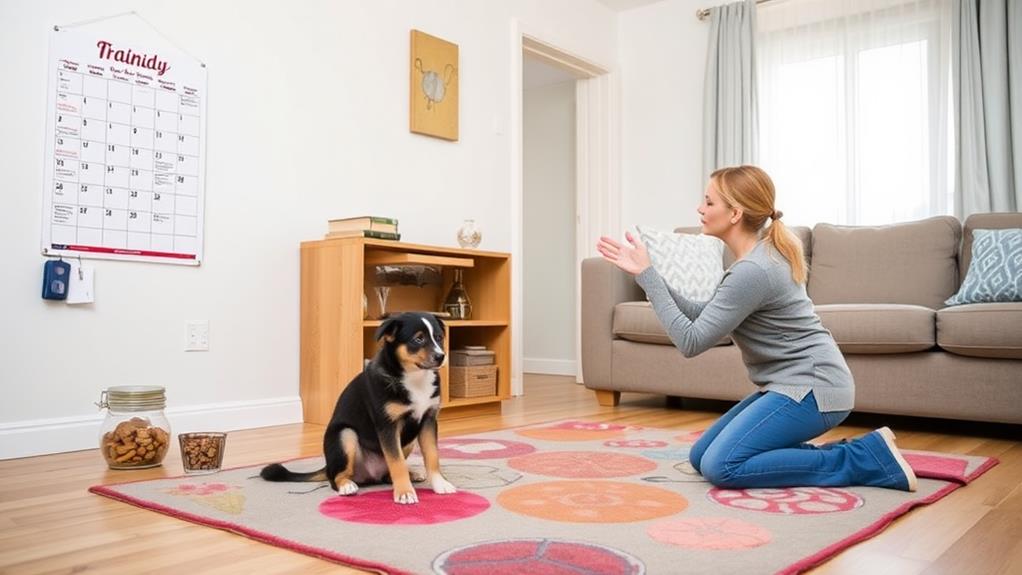
Establishing a consistent training schedule is essential for your puppy's development and helps reinforce the commands they've learned. By setting aside specific times each day for training, you create a routine that your puppy can anticipate. This predictability not only helps your puppy focus but also strengthens their understanding of the commands.
Aim for short, frequent sessions—around 5 to 10 minutes—several times a day. Puppies have short attention spans, so keeping training sessions brief will maximize their learning. Try to incorporate training into your daily activities, like during walks or playtime, to reinforce commands in real-life situations.
Consistency in timing, commands, and rewards is pivotal. Use the same words and gestures for each command, and make sure everyone in the household follows the same rules. This uniformity helps your puppy learn faster and reduces confusion.
Be patient and stay committed to your schedule. If you miss a session, don't stress; just try to get back on track as soon as possible. With a consistent training schedule, you'll build a strong foundation for your puppy's behavior, leading to a well-behaved dog.
Positive Reinforcement Techniques
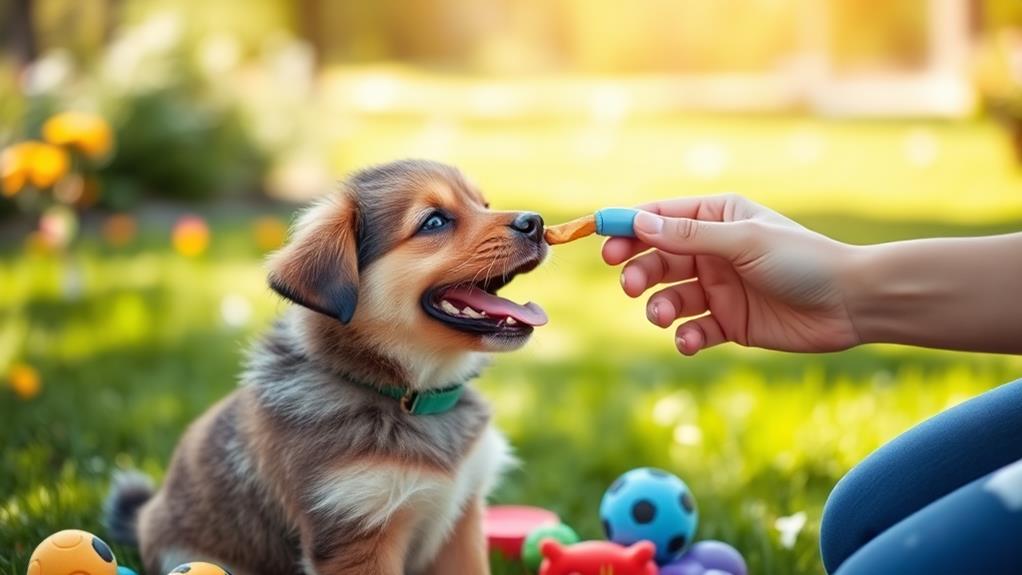
Positive reinforcement techniques are essential for shaping your puppy's behavior effectively. These methods focus on rewarding desired behaviors instead of punishing unwanted ones, creating a positive learning environment. When your puppy does something right, like sitting on command or using the bathroom outside, immediately praise them or offer a treat. This helps them connect the action with a positive outcome.
Timing is imperative. Make sure to reward your puppy right after they perform the desired behavior to reinforce the connection. Using high-value treats, such as small pieces of chicken or cheese, can also boost your puppy's motivation. Consistency is key; always reward the same behavior in the same way to avoid confusion.
Additionally, vary your rewards to keep your puppy engaged. Mix treats with verbal praise or playtime. This not only maintains their interest but also strengthens the bond between you two. Remember, patience is indispensable. If your puppy doesn't understand right away, don't get frustrated. Keep practicing, and soon they'll catch on. By using positive reinforcement, you'll create a happy, well-adjusted puppy eager to learn and please you.
Socialization With People and Pets

Creating a well-behaved dog involves more than just training commands; socialization plays an indispensable role in your puppy's development. Proper socialization helps your pup become comfortable around people and other pets, reducing anxiety and fear. Start the process early, as puppies are most receptive to new experiences between 3 and 14 weeks old.
Expose to Various Environments: Take your puppy to different locations, such as parks, pet stores, and busy streets. Each environment teaches them to adapt to new sights and sounds.
Introduce Different People: Encourage friends and family to interact with your puppy. This builds confidence and helps them learn to trust various people, including children and seniors.
Arrange Playdates with Other Pets: Set up meetings with friendly, vaccinated dogs. Supervised play can help your puppy learn proper social cues and boundaries.
Enroll in Puppy Classes: Consider puppy training classes. These classes often include socialization opportunities with other dogs and people, providing a structured environment for learning.
Crate Training Essentials

Crate training is a valuable tool that fosters a sense of security and comfort for your puppy. It creates a safe space where your pup can relax and feel at ease. Start by selecting a crate that's the right size; your puppy should be able to stand, turn around, and lie down comfortably.
Introduce the crate gradually. Leave the door open and place treats or toys inside to encourage your puppy to explore. Never use the crate as a punishment, as this can create negative associations. Instead, make it a positive experience by rewarding your puppy for entering the crate.
Establish a consistent schedule for crate time, especially during meals, naps, and bedtime. This helps your puppy learn when to expect crate time and can reduce anxiety. Remember, puppies shouldn't be crated for extended periods; they need regular bathroom breaks and social interaction.
Gradually increase the time your puppy spends in the crate, allowing them to adjust comfortably. With patience and positive reinforcement, crate training can help your puppy feel secure and will contribute to their overall well-behaved nature.
Leash Training Fundamentals
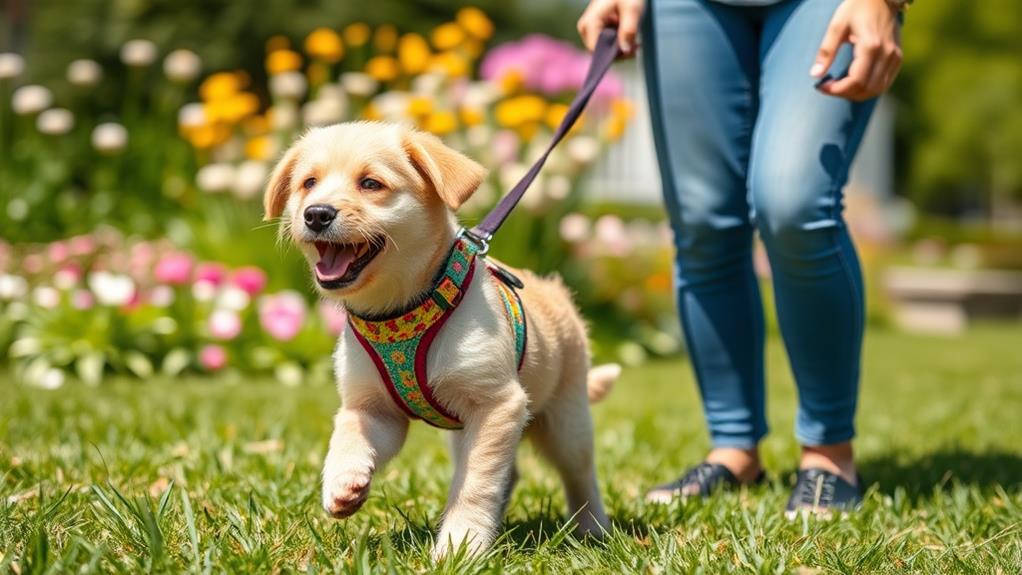
Getting your puppy used to a leash is essential for enjoyable walks and safe outings. Starting leash training early sets the foundation for good behavior.
Choose the Right Leash and Collar: Use a lightweight leash and a comfortable collar or harness that fits your puppy well. This prevents discomfort and makes training easier.
Introduce the Leash Gradually: Let your puppy sniff and explore the leash before attaching it. Allow them to wear the leash indoors for short periods to get used to it.
Practice Basic Commands: Teach your puppy commands like "sit" and "stay" while on the leash. This helps establish control and reinforces positive behavior during walks.
Reward Good Behavior: Use treats and praise when your puppy walks calmly beside you. Positive reinforcement encourages them to associate the leash with enjoyable experiences.
Housebreaking Tips
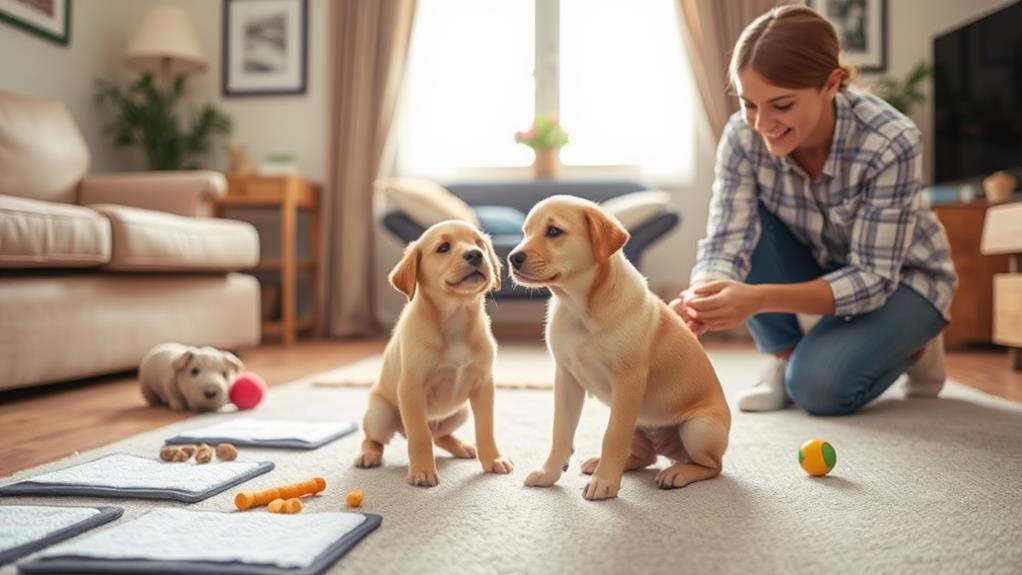
While housebreaking your puppy can be a challenging process, it's essential for establishing good habits and a clean home. Start by setting a consistent schedule for feeding and bathroom breaks. Puppies thrive on routine, so try to take your pup outside first thing in the morning, after meals, and before bedtime.
Choose a designated potty spot outside and take your puppy there each time. Use a specific command, like "go potty," to help them associate the command with the action. When they do their business outside, praise them immediately and offer a treat. Positive reinforcement goes a long way!
Keep an eye on your puppy indoors. If you see signs they need to go—like sniffing or circling—quickly take them outside. Accidents will happen, so don't scold your puppy; instead, clean up thoroughly to eliminate odors that might encourage them to go in the same spot again.
Lastly, consider using puppy pads as a temporary solution if you're unable to take them out frequently. With patience and consistency, your puppy will learn to do their business outside, making your home a cleaner and more enjoyable space.
Handling Biting and Nipping
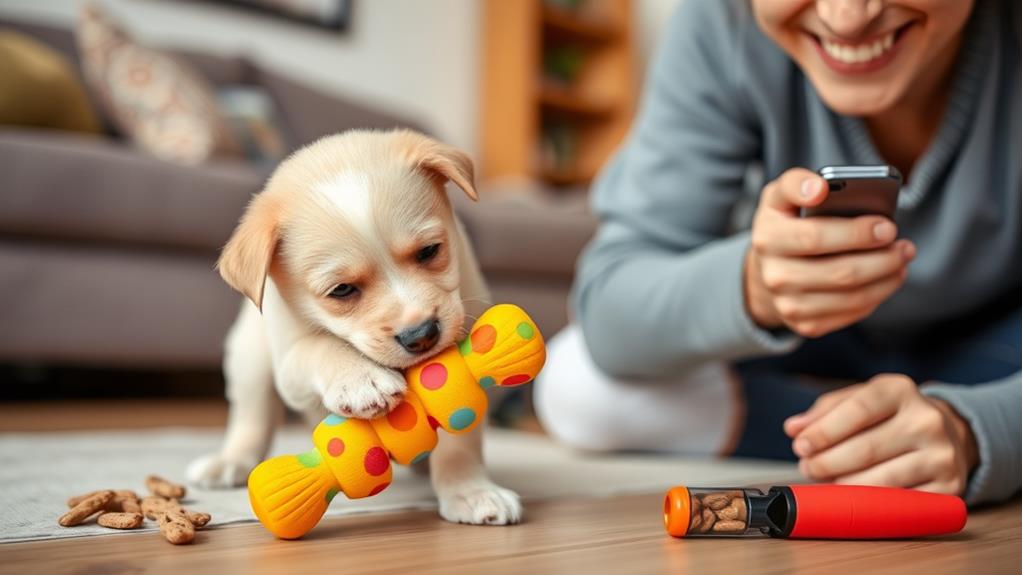
Many puppies go through a phase of biting and nipping, which can be both frustrating and painful. It's important to address this behavior early on to prevent it from becoming a habit.
- Redirect the Behavior: When your puppy starts to bite, quickly redirect their attention to a chew toy. This teaches them what's appropriate to bite.
- Use a Firm "No": If your puppy bites, respond with a firm but calm "no." This helps them understand that biting isn't acceptable.
- Time-Outs: If your puppy continues to nip, give them a brief time-out. This can mean removing them from the play area for a minute or two, allowing them to calm down.
- Socialization: Expose your puppy to other vaccinated dogs and people. This helps them learn bite inhibition through play and interactions with others.
Patience and Persistence
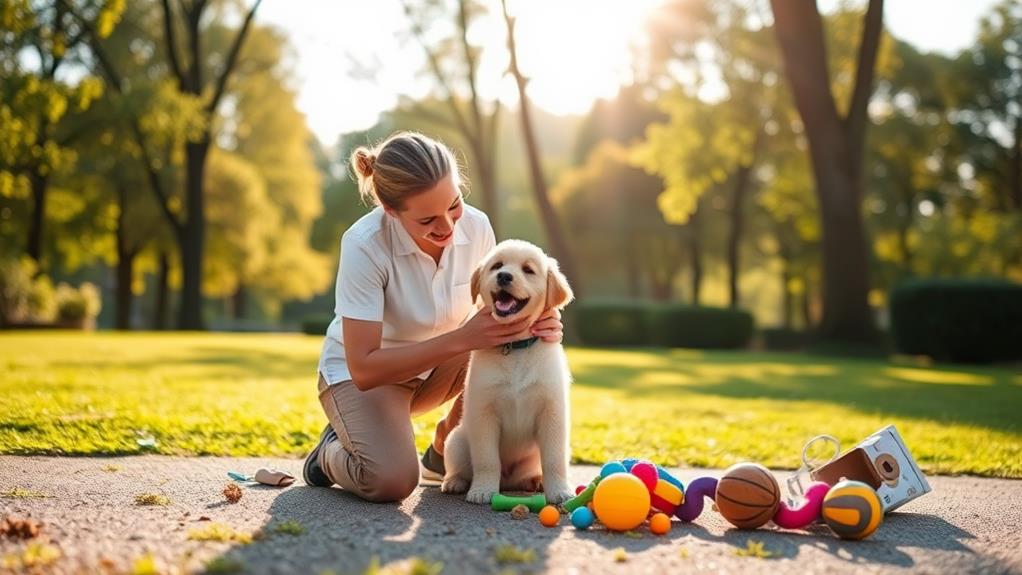
Training a puppy can sometimes feel overwhelming, especially when dealing with behaviors like biting and nipping. You might find yourself frustrated when your pup doesn't pick things up as quickly as you'd like. But remember, patience and persistence are your best friends in this journey.
Consistency is key. Puppies thrive on routine, so stick to a schedule for training sessions. Short, frequent sessions are more effective than long, drawn-out ones. Celebrate small victories, and don't get discouraged by setbacks. Understand that mistakes are part of the learning process for both you and your puppy.
When your puppy struggles to grasp a command, take a deep breath and try again. Use positive reinforcement—praise, treats, or affection—to encourage the right behaviors. If you stay calm and persistent, your puppy will pick up on your energy and become more enthusiastic to learn.
Lastly, remind yourself that training is a marathon, not a sprint. Each day brings new challenges, but with dedication, you'll see progress. Trust the process, and maintain a positive attitude. Your patience will eventually lead to a well-behaved puppy who understands what you expect.
Regular Exercise and Playtime
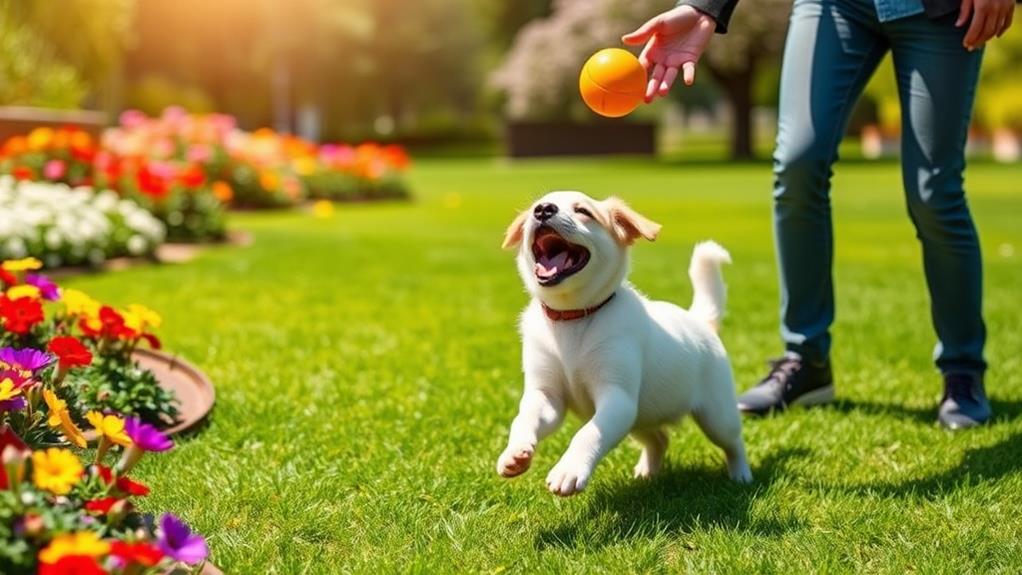
Regular exercise and playtime are essential for your puppy's development and well-being. They help your pup expend energy, reduce behavioral problems, and strengthen your bond. Plus, a tired puppy is a well-behaved puppy!
Daily Walks: Aim for at least 30 minutes of walking each day. This provides mental stimulation and physical exercise.
Interactive Play: Engage in games like fetch or tug-of-war. These activities not only burn energy but also enhance your puppy's training.
Socialization: Arrange playdates with other dogs. This teaches your puppy how to interact appropriately and helps with their social skills.
Puzzle Toys: Invest in toys that challenge your puppy's mind. They keep your dog occupied and promote problem-solving skills.
Incorporate these activities into your daily routine, and you'll notice the positive impact on your puppy's behavior and overall happiness. Regular exercise and playtime aren't just fun; they're imperative for raising a well-adjusted dog!
Frequently Asked Questions
How Long Does It Take to Fully Train a Puppy?
Training a puppy usually takes several months, but it depends on the breed, age, and consistency. You'll see progress with daily practice, patience, and positive reinforcement, so stay committed for the best results.
What Age Is Best to Start Training a Puppy?
Like planting a seed, the best time to start training your puppy is around eight weeks old. At this age, their minds are sponges, ready to absorb commands and form strong bonds with you.
Can I Train My Puppy Without Professional Help?
Yes, you can train your puppy without professional help! With patience, consistency, and positive reinforcement, you'll build a strong bond while teaching essential commands. Just remember to start with basic training and gradually progress.
What Should I Do if My Puppy Isn't Responding?
If your puppy isn't responding, try changing your approach. Use positive reinforcement, keep training sessions short, and minimize distractions. Patience is key—consistency and understanding will help your pup learn and engage better.
Are Certain Breeds Easier to Train Than Others?
Yes, certain breeds are indeed easier to train than others. Breeds like Labrador Retrievers and Border Collies tend to be more responsive. Understanding your puppy's breed characteristics can help you tailor your training approach effectively.
Conclusion
By following these essential tips, you'll set the foundation for a well-behaved dog. Remember, around 80% of a dog's training success comes from consistent practice and positive reinforcement. So, stay patient and persistent in your efforts! With regular exercise, socialization, and a structured routine, you'll create a happy, well-adjusted pup. Your commitment now will pay off in years of companionship and joy with your furry friend. Enjoy the journey of training together!

